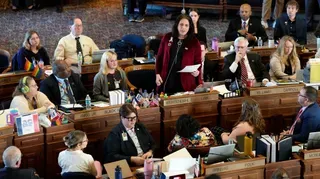March 19, 2015
80 Years On, Charleston Worries About New Building Design
Matthew Wexler READ TIME: 2 MIN.
Eight decades after Charleston passed the nation's first historic preservation ordinance to protect its picturesque city of old pastel buildings and quiet gardens, there's concern the design of new buildings is not as good as that of the old.
So the city, whose population of 134,000 has increased by 37,000 in just 15 years, is revisiting the process by which it approves new commercial, residential and mixed-used projects on the Charleston peninsula needed to serve a growing population.
Insuring high-quality design in newer buildings is a priority for Mayor Joseph P. Riley Jr. during his last year in office.
"We have had some controversy in recent years," Riley, mayor longer than anyone in Charleston's nearly 350-year history, said in a recent interview. "Quite honestly, we have seen proposed designs that were not remarkable."
The 1931 preservation ordinance established a Board of Architectural Review to approve the design of, changes to, and even the colors of paint used on buildings in the historic district.
But back then, the area under the board's purview was about 180 acres near the city's Battery. Now it's 15 times larger, comprises most of the Charleston peninsula, and the board is presented 2,000 project requests a year.
"We preserved the historic district," city Planning Director Tim Keane told an audience gathered last week for a meeting on the city's efforts. "The question is what is the city going to look like 10 years or 20 years from now? This is a scale of development we haven't had here."
There have been past debates over the design of new buildings in the city. In the 1980s, they centered on Charleston Place - the hotel and shopping gallery that now anchors the city's thriving business district - and later protracted fights over the design of state and federal courthouses downtown.
Most recently, there was contention over Clemson University plans to build a modernistic structure for its architectural program. The university pulled those plans in November.
To advise as new design rules are explored, the city and the Historic Charleston Foundation brought in noted architect and town planner Andres Duany.
His firm has designed towns in this country and abroad, including Seaside in Florida, a community familiar to many moviegoers because it was used as the set of the Jim Carrey movie "The Truman Show."
Duany told the gathering last week what is good architecture can often be subjective. He said during his walking tours of the city that a new building one architect told him was great, another might disdain.
The job of maintaining great quality is too big for the review board, he said.
"It's just that the city is too large and too complex to be handled by seven people, with a relatively small staff, twice a month," he said. "Frank Lloyd Wright would be burned out."
He suggested, among other things, the downtown checkerboard of zoning classifications be streamlined and that instead of limiting buildings by height, planners limit them to a specific number of stories, allowing architects more flexibility.
Private buildings should "be harmonious and relatively mute" adding to the sense of community, he said. "It's not about standing out. It's not about making an architect famous. It's about cooperating in a definition of public space."
Matthew Wexler is EDGE's Senior Editor, Features & Branded Content. More of his writing can be found at www.wexlerwrites.com. Follow him on Twitter and Instagram at @wexlerwrites.





